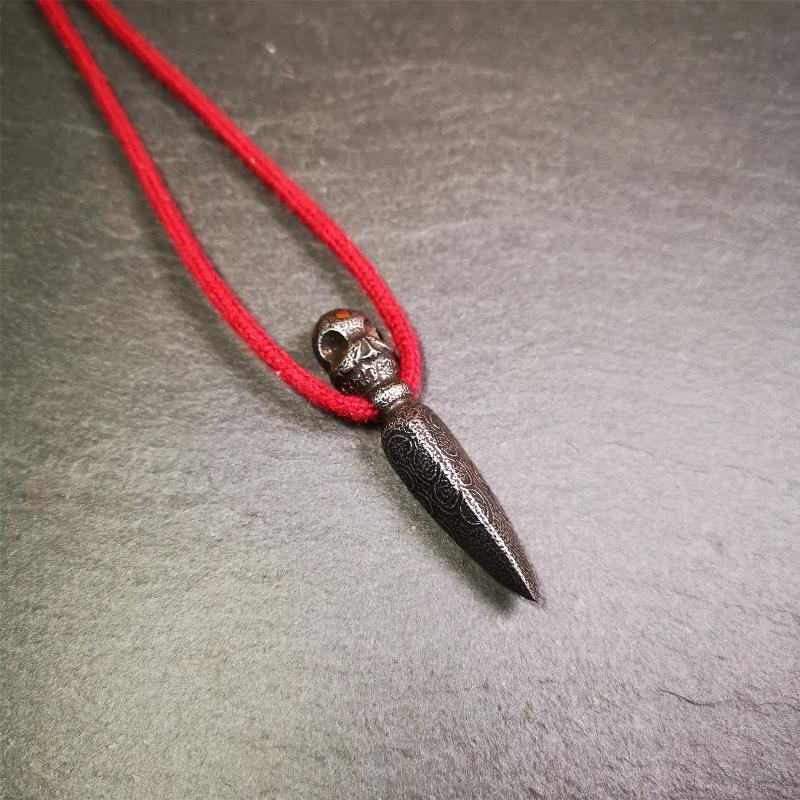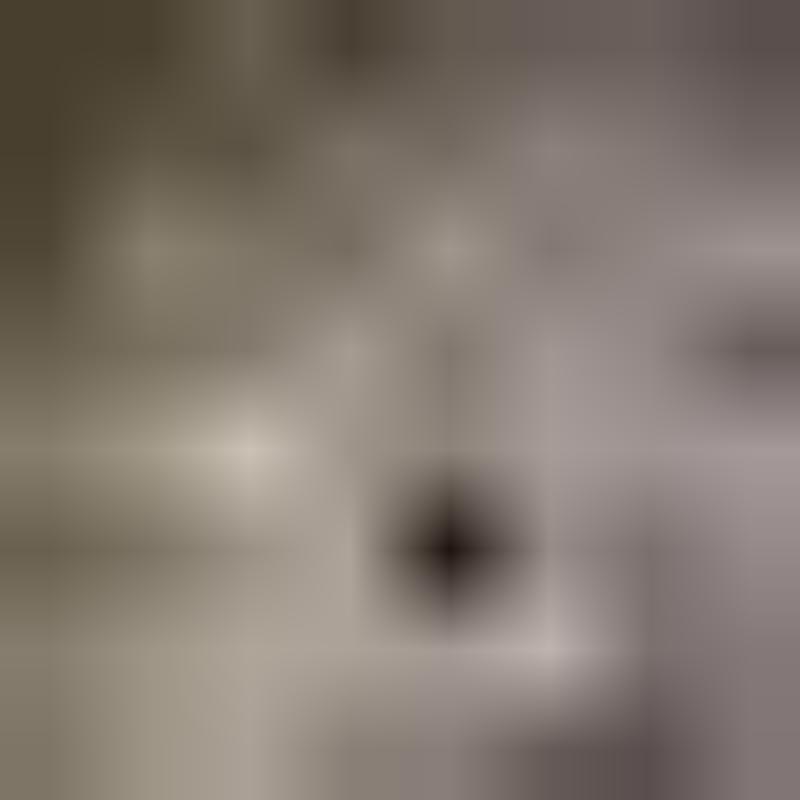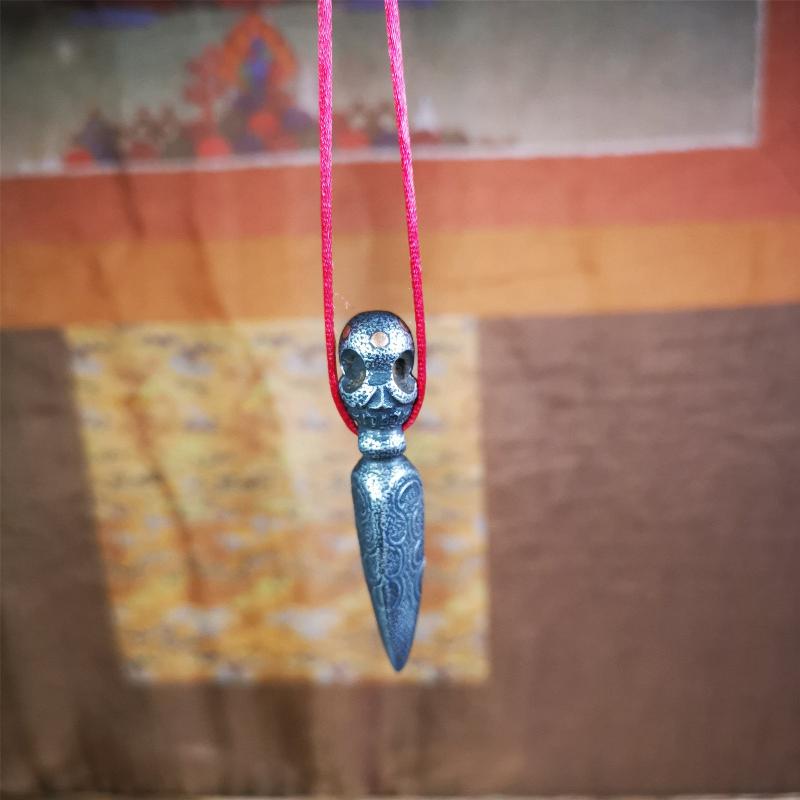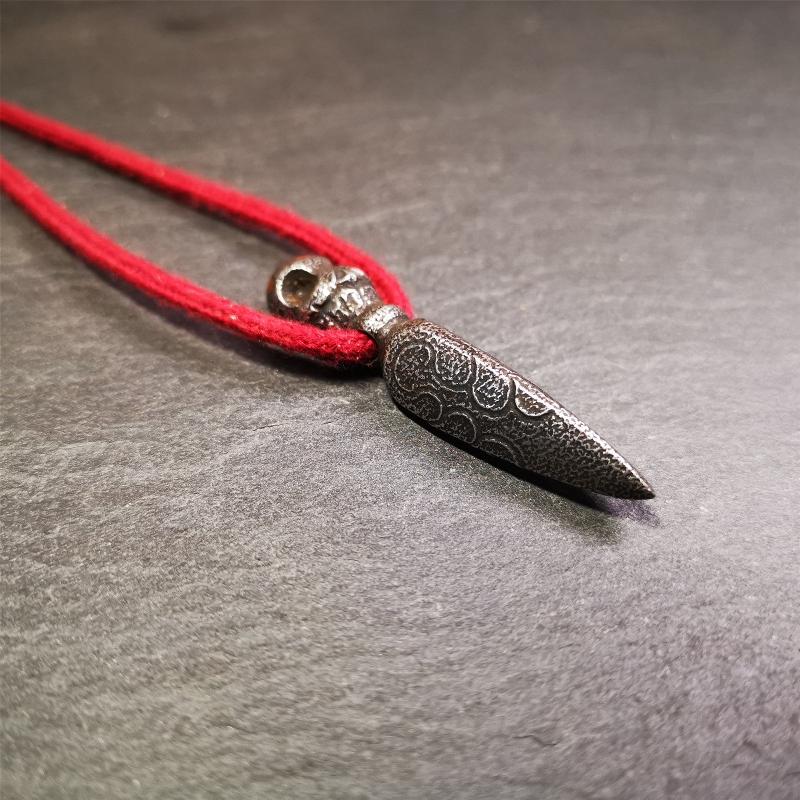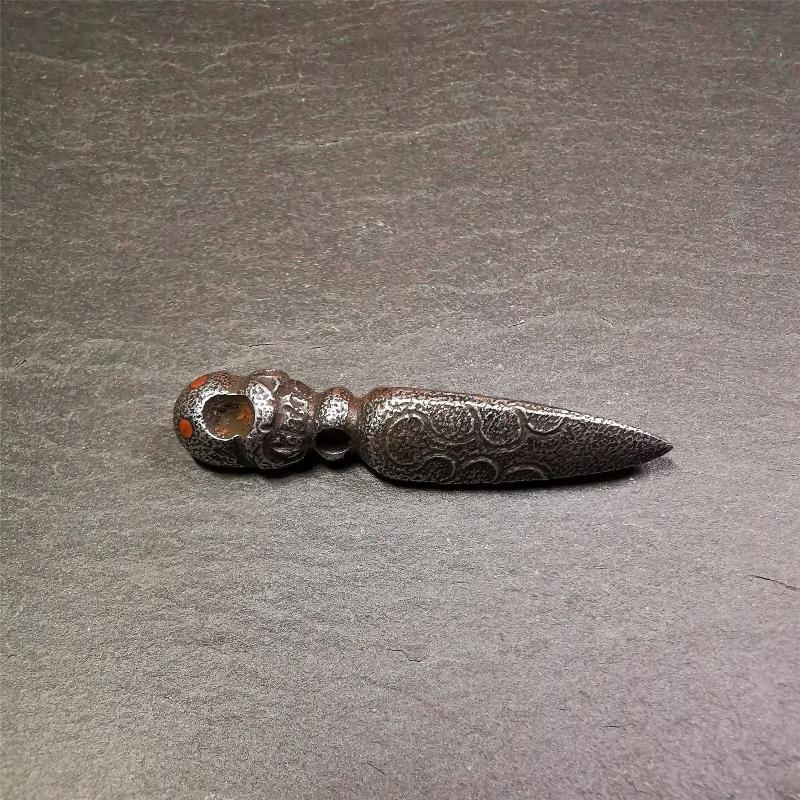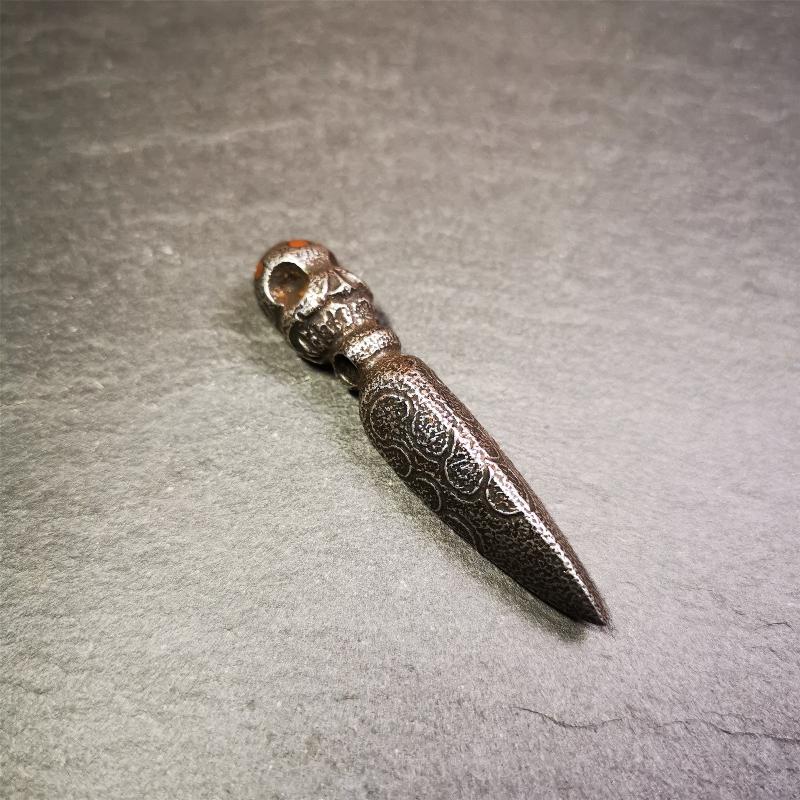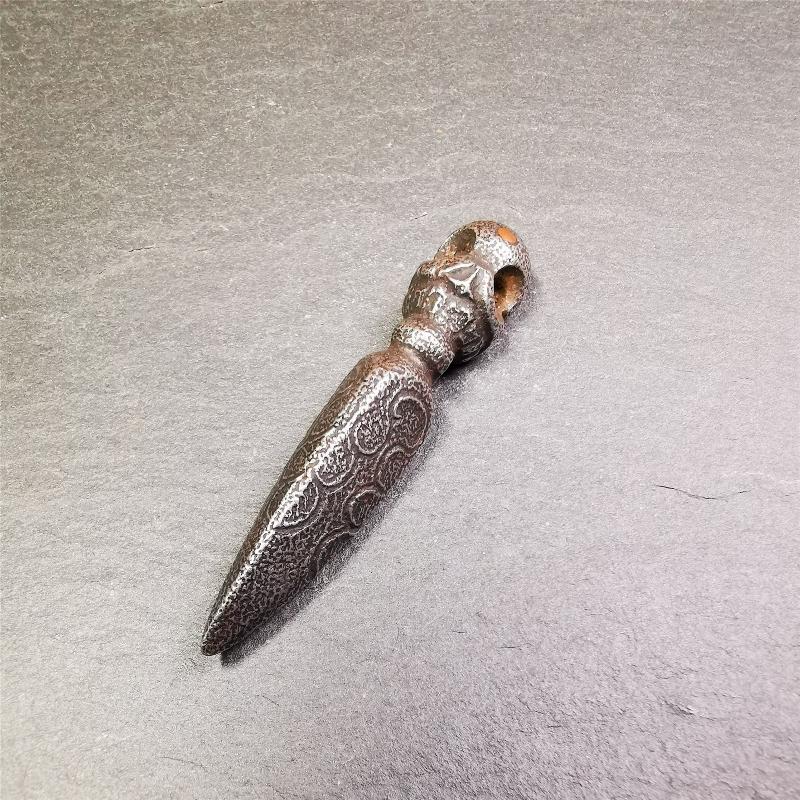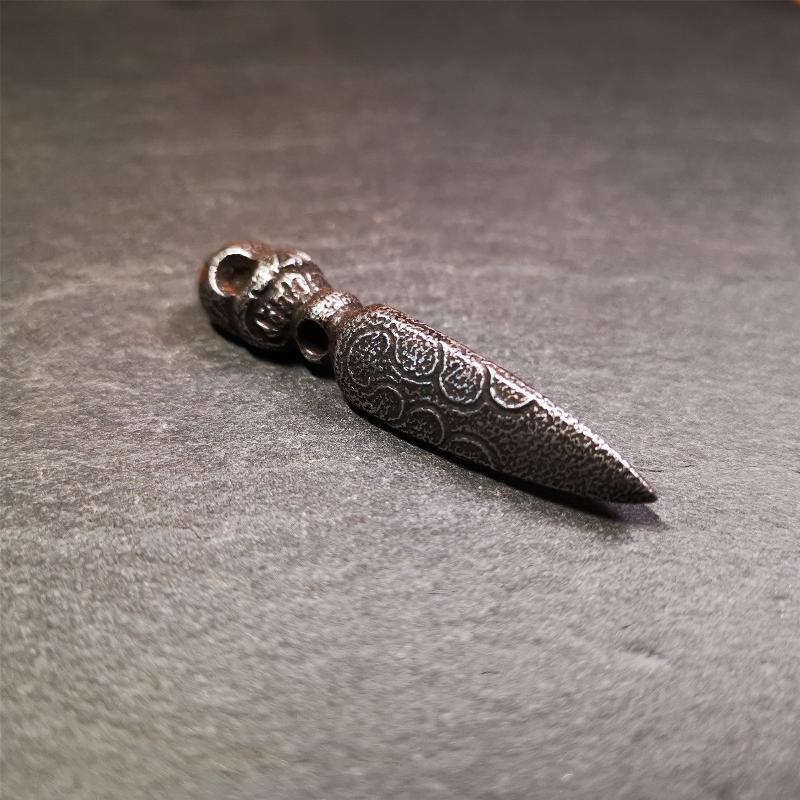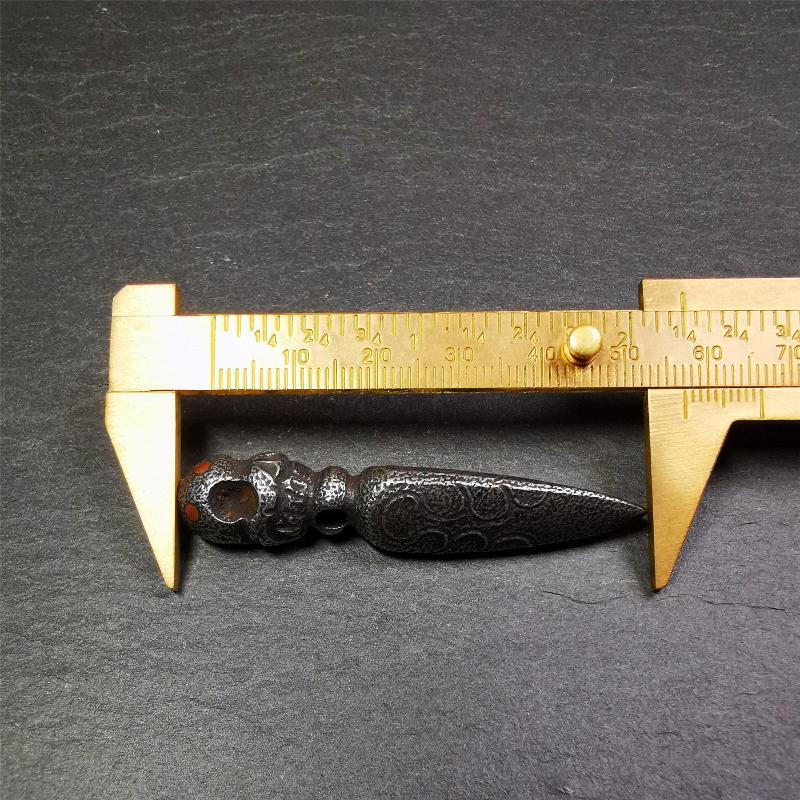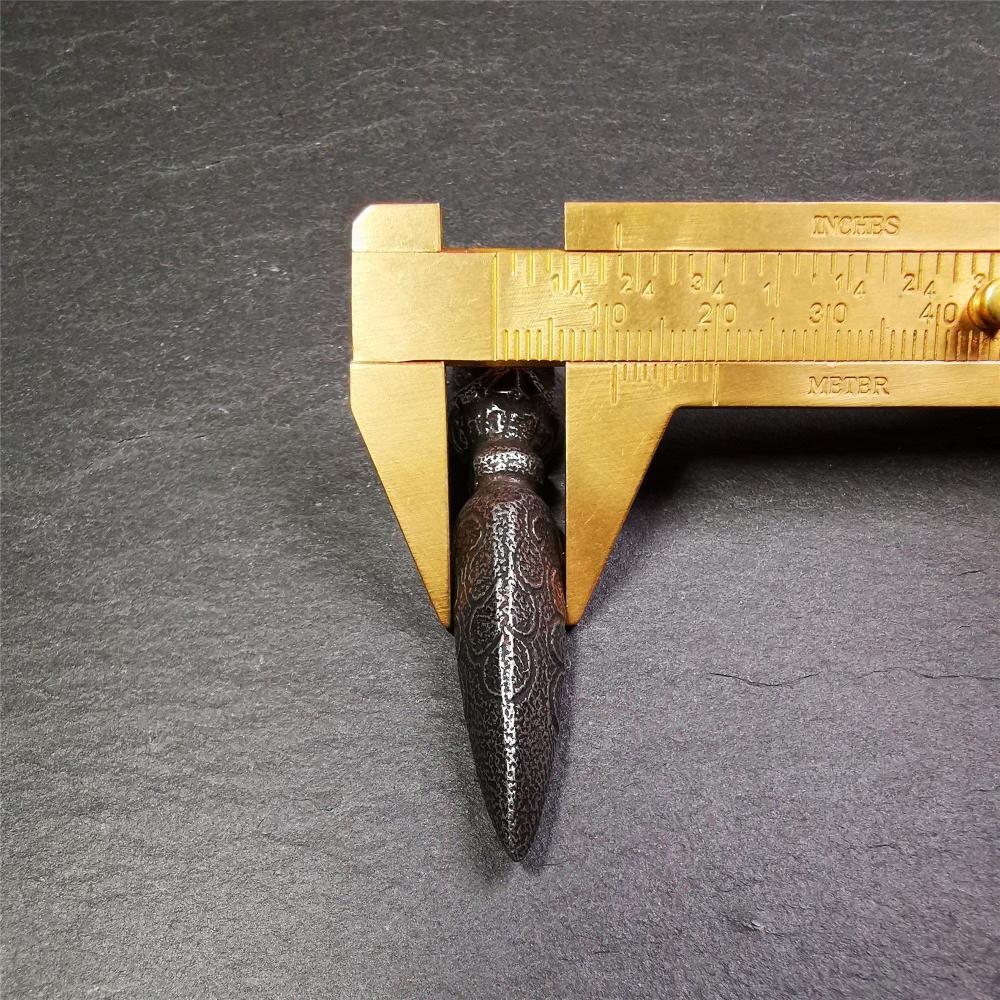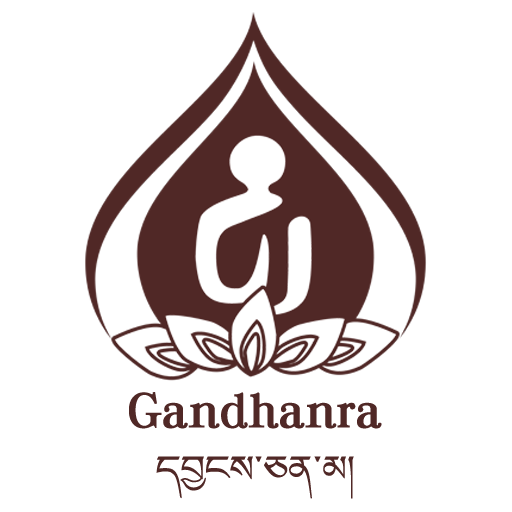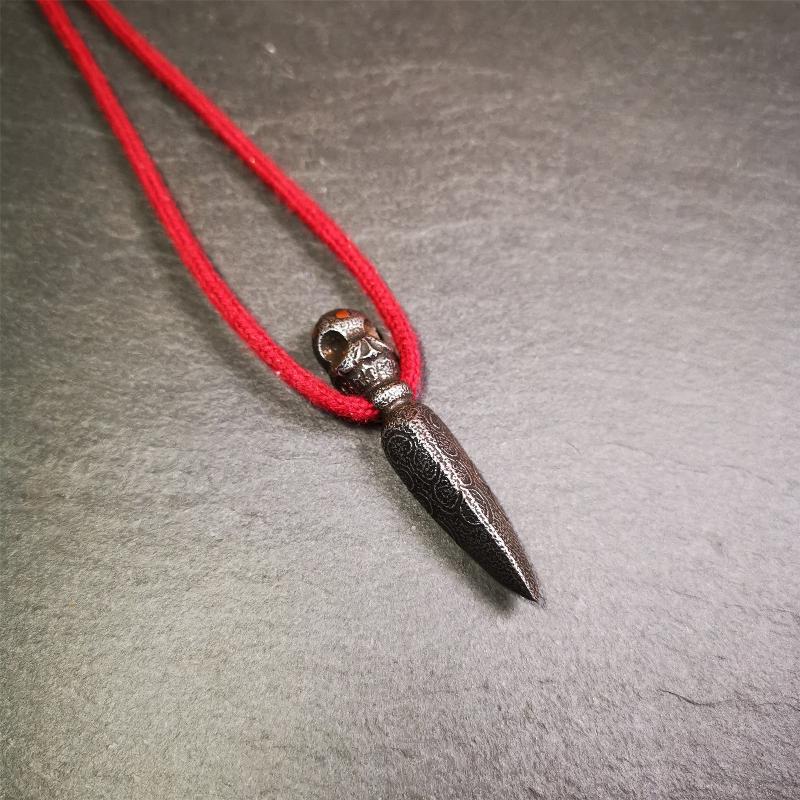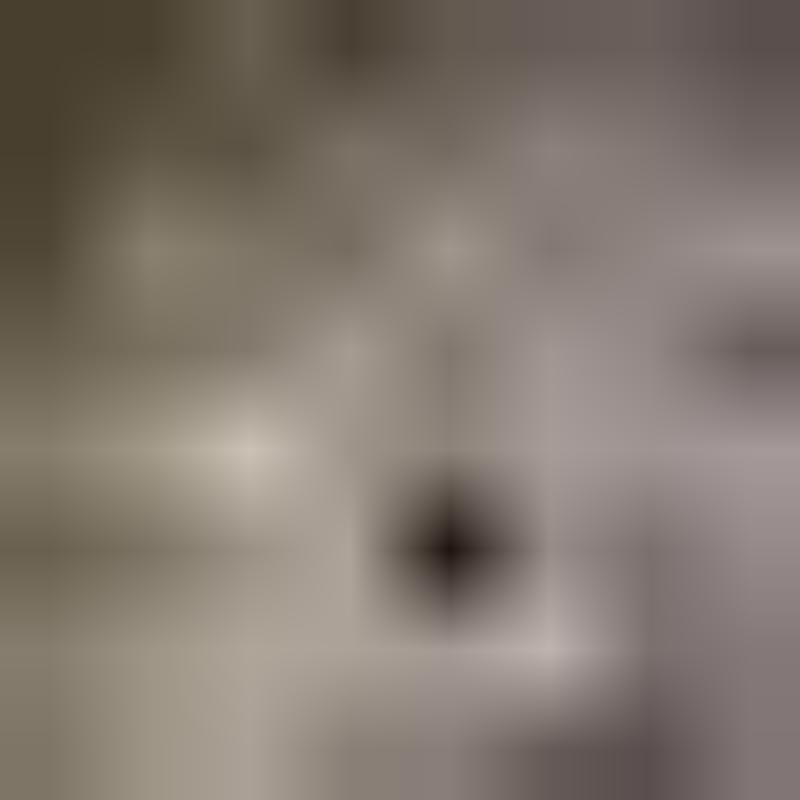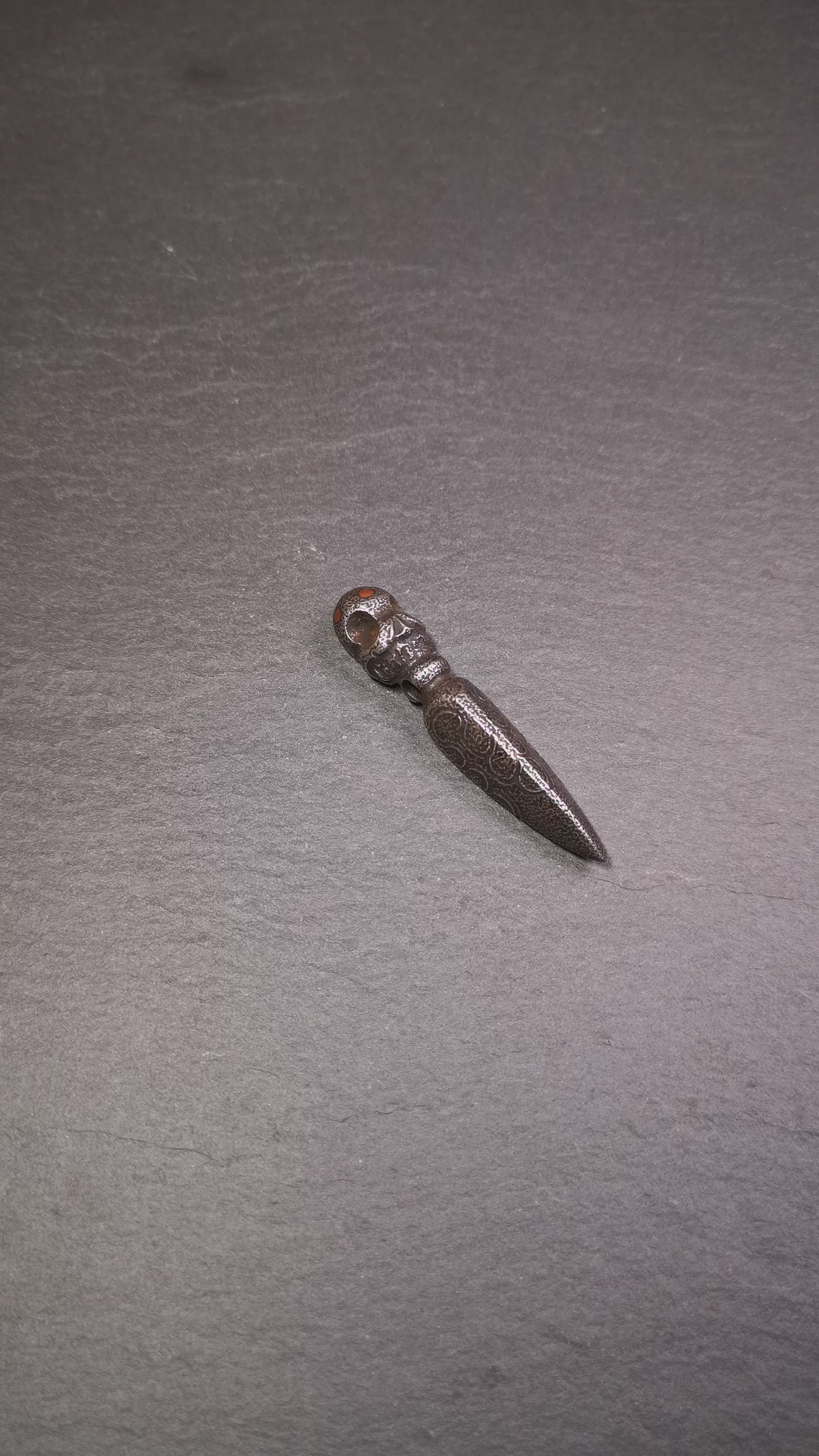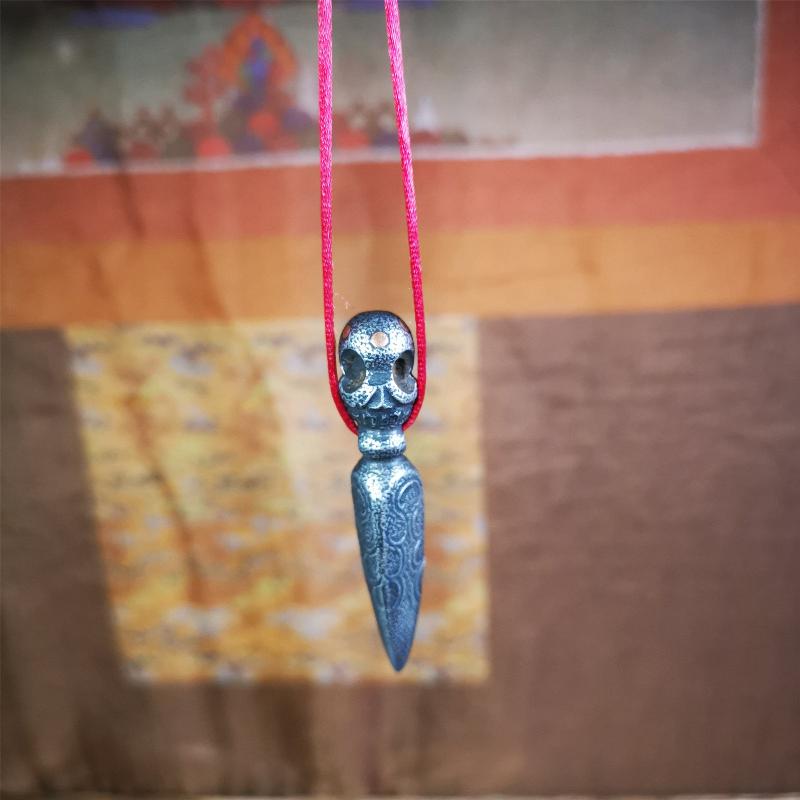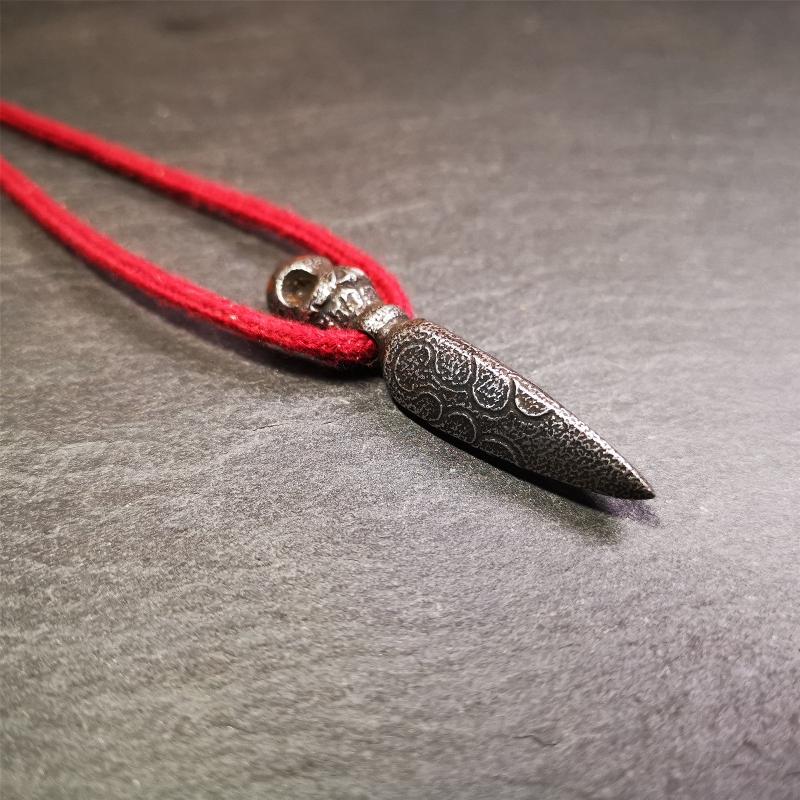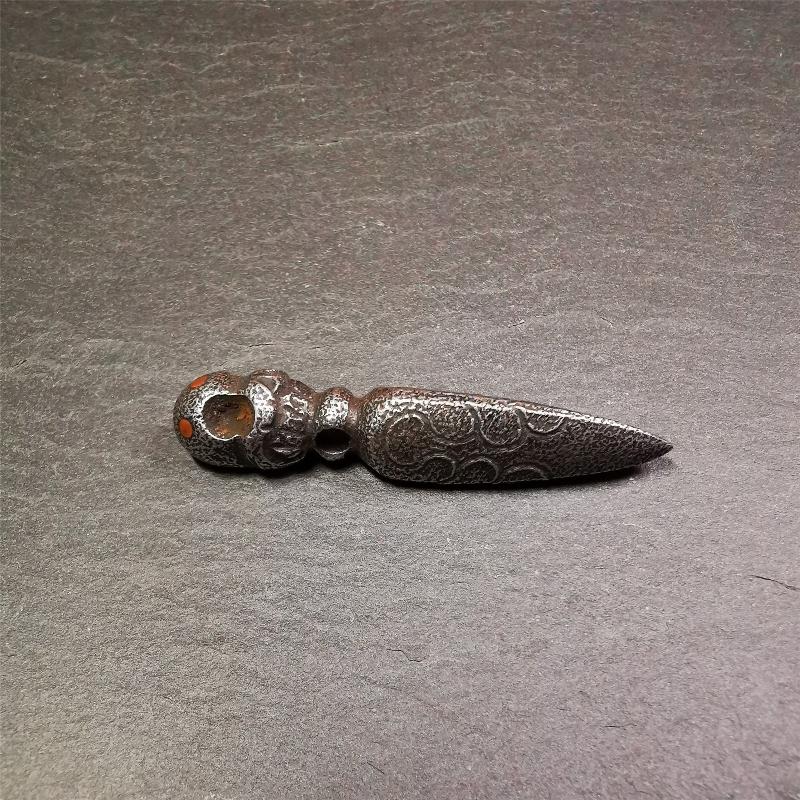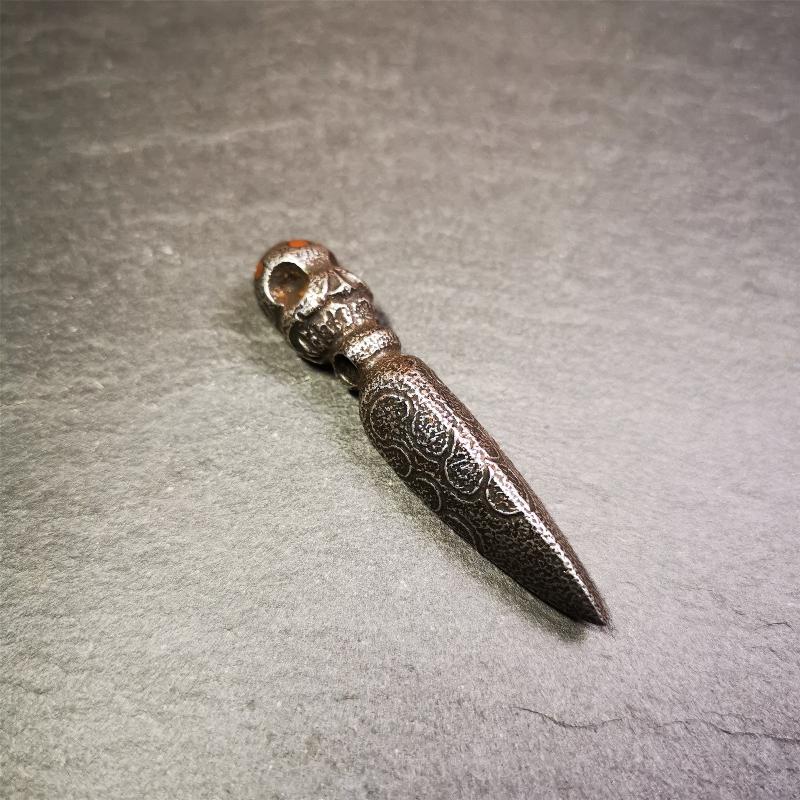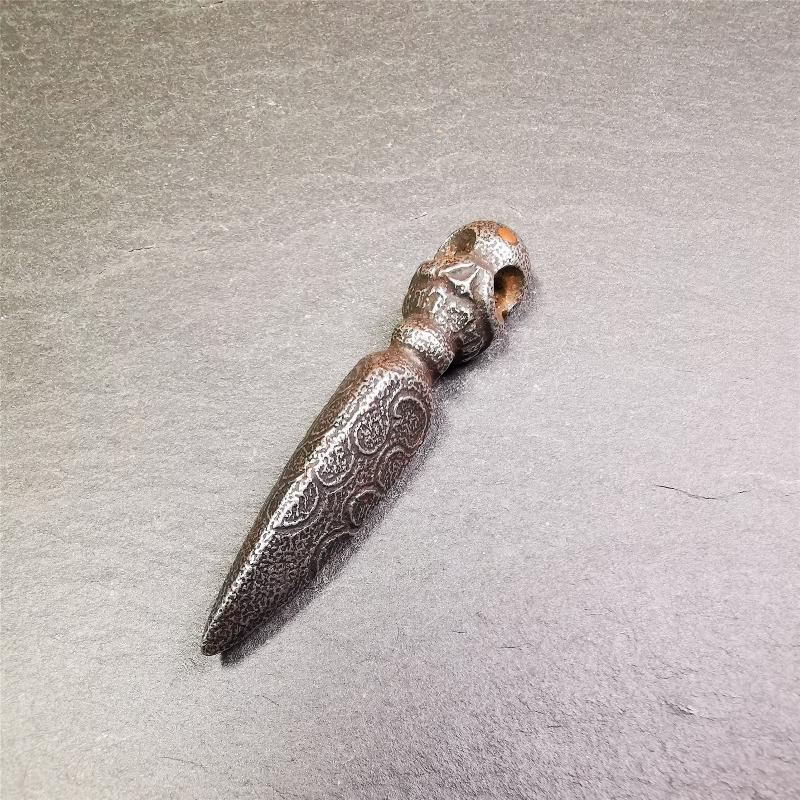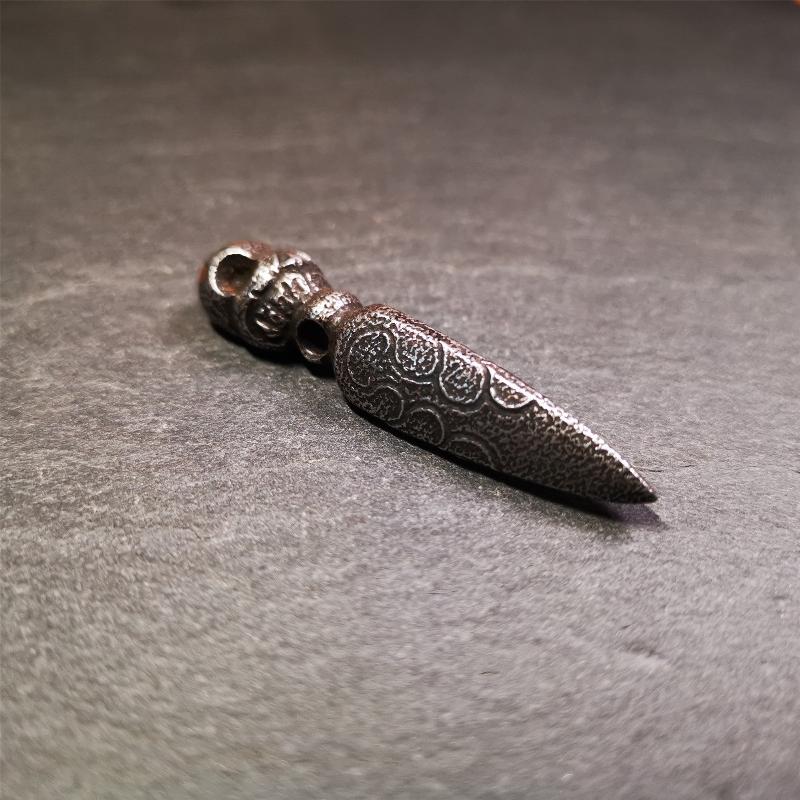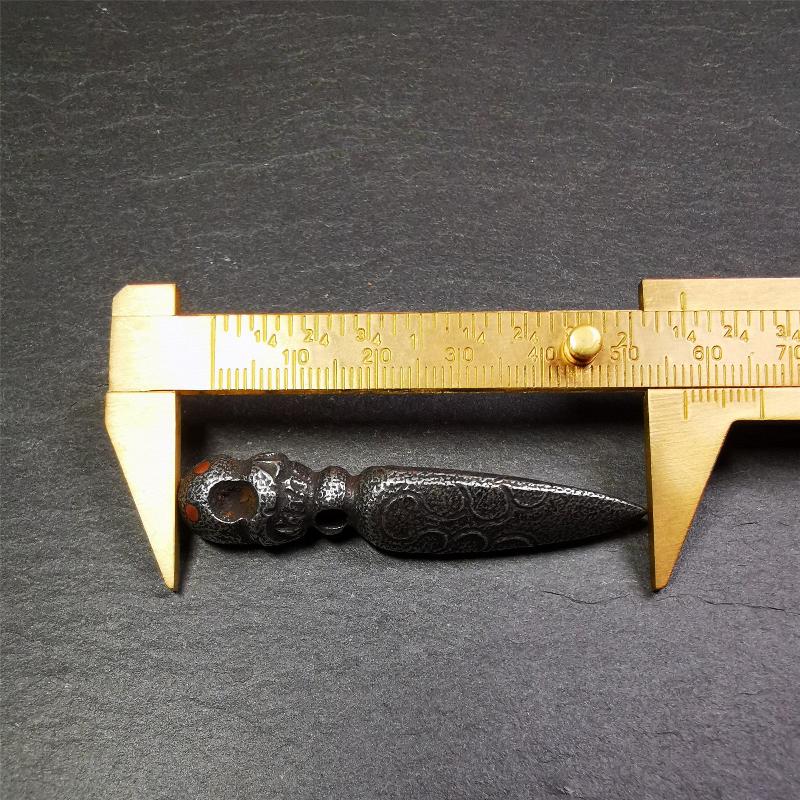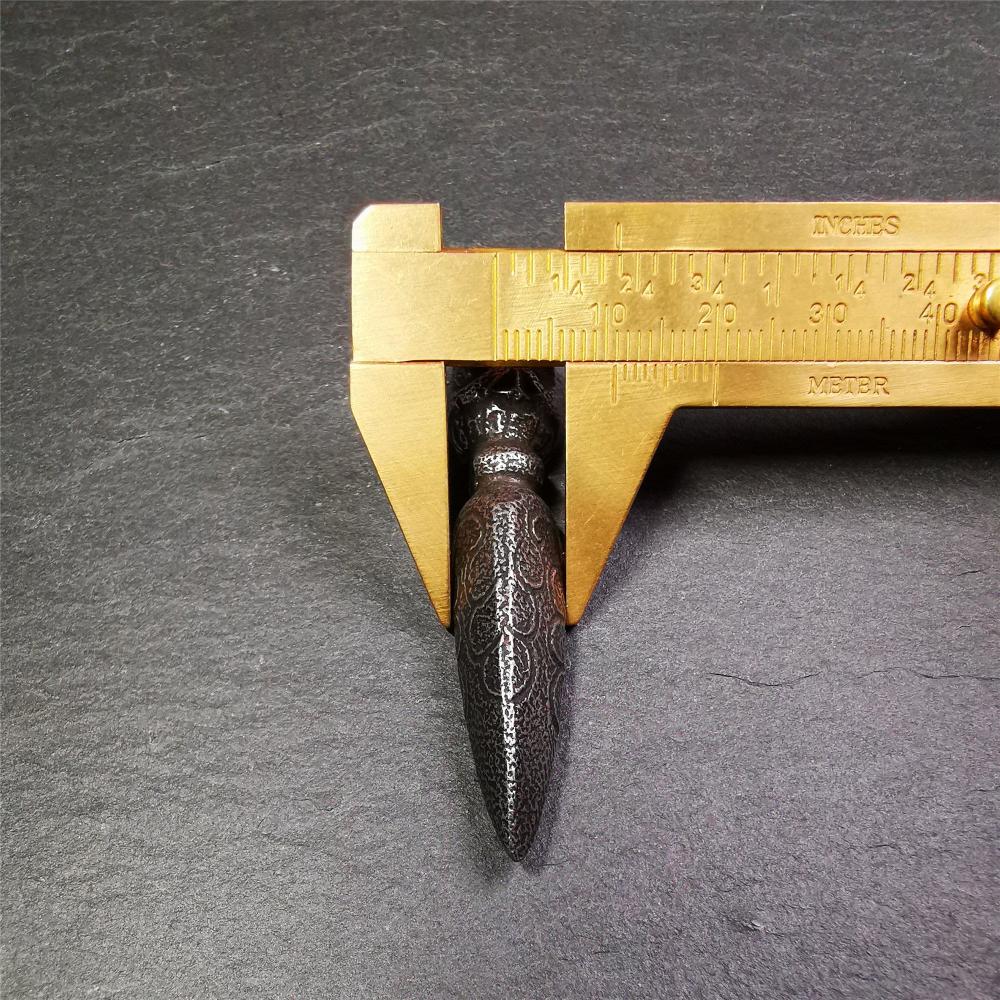Totenkopf-Phurba - 2,24"
Totenkopf-Phurba - 2,24"
Verfügbarkeit für Abholungen konnte nicht geladen werden
Dieser Phurba wurde von tibetischen Handwerkern hergestellt und stammt aus der Stadt Hepo im Kreis Baiyu, dem Geburtsort des berühmten tibetischen Kunsthandwerks.
❤Der obere Teil ist ein Shmashana-Adhipati-Schädel, der untere Teil ist ein Dorje Phurba mit drei eingelegten Kupferpunkten, sehr filigran.
Sie können es als Schlüsselanhänger oder Charm-Anhänger tragen oder es einfach als Dekoration auf Ihren Schreibtisch legen.
❤Einzelheiten:
- 100% Handarbeit
- Anhängermaterial: Kalteisen
- Muster: Dorje Phurba
- Höhe: 57 mm / 2,24 Zoll
- Durchmesser: 11 mm
Sie erhalten 1 Phurba wie auf den Bildern gezeigt.
❤ÜBER Kila, Dorje Phurba
Der Kila oder Phurba ist ein dreieckiges, pflock-, pfahl-, messer- oder nagelähnliches Ritualgerät, das traditionell mit dem indo-tibetischen Buddhismus, dem Bon und den indischen vedischen Traditionen in Verbindung gebracht wird.
Die Herstellung von Kila ist sehr vielfältig. Kila haben Knauf, Griff und Klinge und sind oft sowohl auf der horizontalen als auch auf der vertikalen Achse in Dreiergruppen unterteilt, obwohl es bemerkenswerte Ausnahmen gibt.
Diese kompositorische Anordnung unterstreicht die numerologische Bedeutung und spirituelle Energie der ganzen Zahlen Drei (3) und Neun (9).
Kīla können aus verschiedenen Materialien und Materialkomponenten wie Holz, Metall, Ton, Knochen, Edelsteinen, Horn oder Kristall bestehen und hergestellt werden.
Die Magie des magischen Dolches beruht auf der Wirkung, die das materielle Objekt auf die geistige Welt hat. Die Kunst tantrischer Magier oder Lamas liegt in ihrer visionären Fähigkeit, die spirituelle Energie des materiellen Objekts zu erfassen und sie willentlich in eine bestimmte Richtung zu lenken. ... Der tantrische Gebrauch des Phurba umfasst die Heilung von Krankheiten, Exorzismus, das Töten von Dämonen, Meditation, Weihen (Puja) und Wettermachen. Die Klinge des Phurba wird zur Zerstörung dämonischer Kräfte verwendet. Das obere Ende des Phurba wird von den Tantrikas für Segnungen verwendet.
